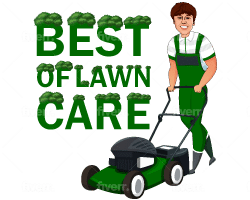7November 2023
Maintaining a beautiful lawn is not an easy task. It requires time, effort, and attention to detail. In this blog post, we will discuss the importance of fertilization and leaf removal in achieving a healthy and stunning yard. We will also cover other essential aspects of lawn care that you need to know.
Introduction to Lawn Care
A lush green lawn can enhance the curb appeal of your home and provide a pleasant space for outdoor activities. To achieve a beautiful lawn, it is crucial to understand its basic needs, including sunlight, water, nutrients, and airflow.
Choosing the Right Mower for Your Yard
The type of mower you use can have a significant impact on the overall appearance of your lawn. There are several types of mowers available, such as push mowers, riding mowers, and zero-turn mowers. Choose one that suits your yard’s size and terrain.
Fertilization Basics: What You Need to Know
Fertilizer provides essential nutrients that your lawn needs to grow strong and healthy. The three primary nutrients found in fertilizers are nitrogen, phosphorus, and potassium. These nutrients promote growth, color, and density of your grass.
Timing and Frequency of Fertilizer Application
The timing and frequency of fertilizer application depend on factors like climate, soil conditions, and grass species. Generally, it is recommended to apply fertilizer twice or thrice per year, during early spring, midsummer, and late fall.
Establishing a Watering Schedule for Your Lawn
Watering your lawn regularly is critical to maintaining a healthy turf. A good rule of thumb is to water deeply once or twice a week, rather than shallowly every day. This encourages deep root growth and helps prevent disease and pests.
Types of Irrigation Systems
There are various irrigation systems available, including sprinklers, drip irrigation, and underground piping. Each system has its advantages and disadvantages depending on your specific needs.
Proper Watering Depth and Timing
To ensure optimal moisture levels, measure the depth of your watering with a rain gauge or screwdriver. Water until the soil reaches a depth of six inches, and avoid overwatering, which can lead to fungal diseases and root rot.
Dealing with Diseases and Pests in Your Lawn
Dethatching and Aerating for Healthy Grass Growth
Thatch buildup can hinder proper aeration and nutrient absorption by your grass roots. Regular dethatching and aerating can help remove excess thatch and improve airflow, leading to healthier and more resilient turf.
Seeding and Overseeding for Lawn Repair
If your lawn has bare spots or thin areas, consider seeding or oversowing to fill them in. Be sure to choose the right grass variety for your region and follow proper planting instructions for best results.
In conclusion, taking care of your lawn involves many different tasks, from choosing the right equipment to monitoring its health and applying appropriate treatments when necessary. By following these guidelines, you can create a beautiful and thriving landscape that adds value to your property while providing a relaxing environment for yourself and others.
